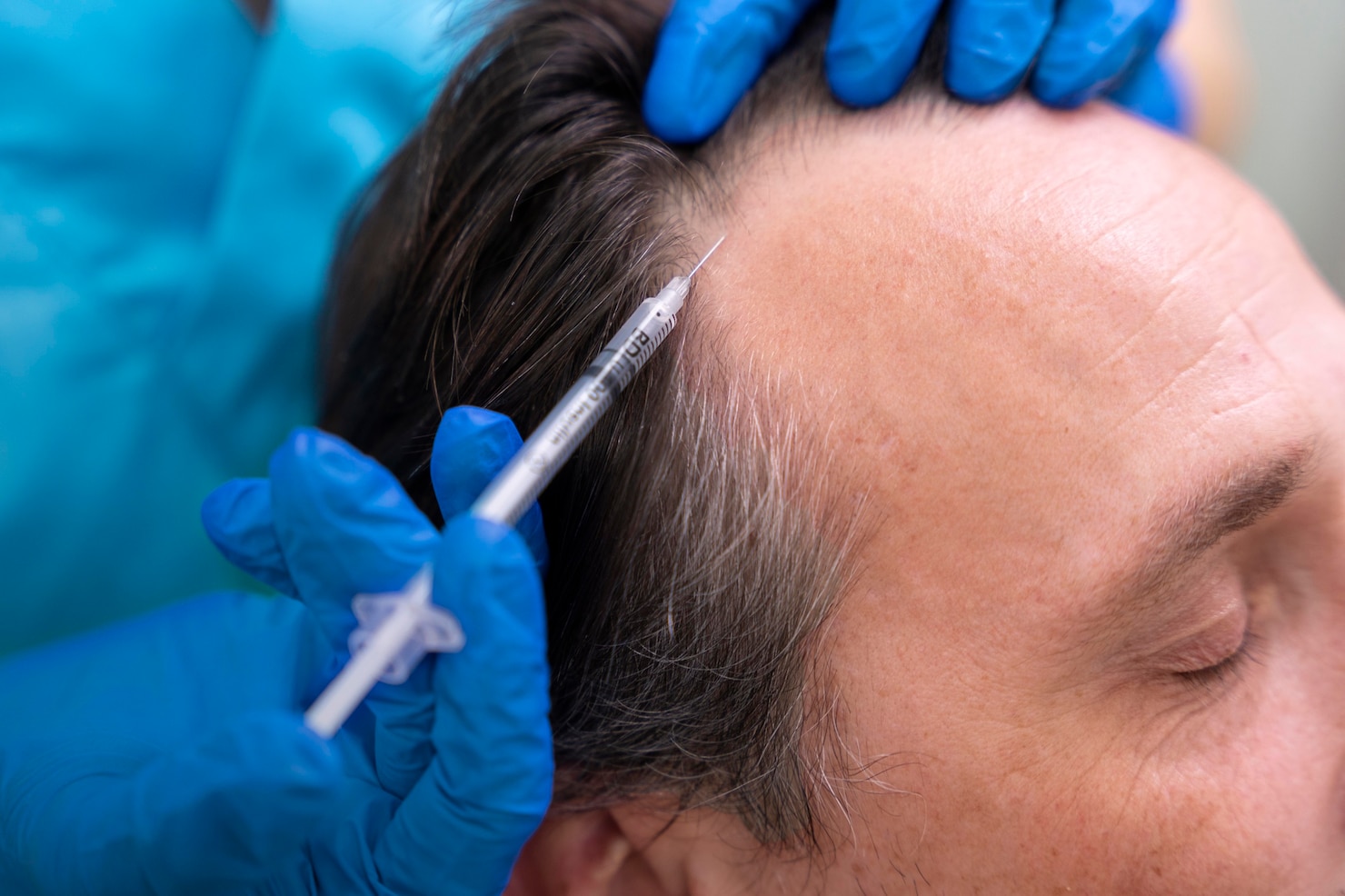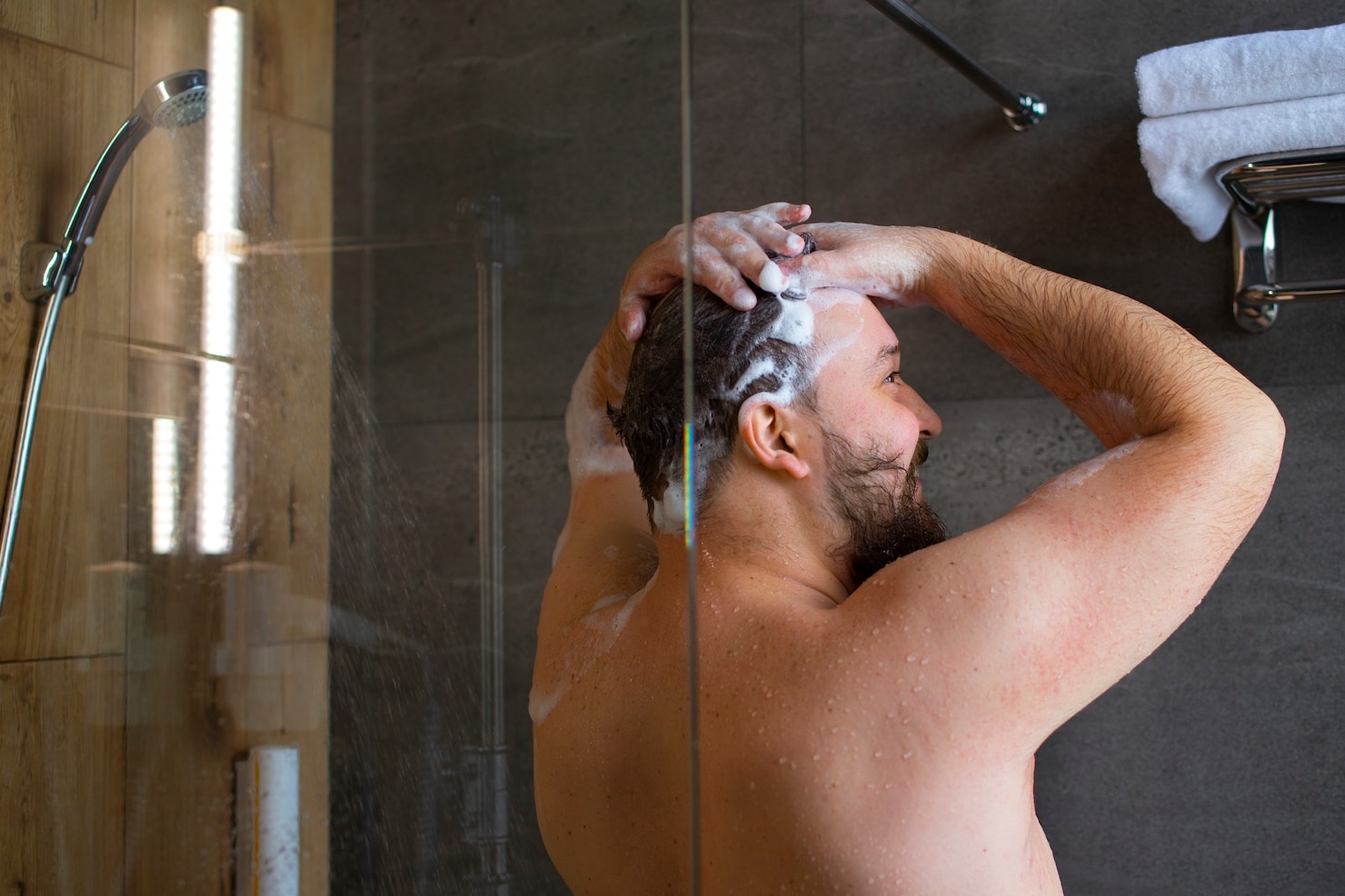
Thinning hair can be a distressing experience for both men and women. If you’ve been interested in microneedling hair loss treatments before, it’s likely you’ve spent hours online looking up microneedling hair loss before and after pictures or searching for terms like “hair loss microneedling” for some answers.
In this article, we will delve into the world of microneedling for hair loss and explore how it can help combat hair loss and promote healthy hair growth so you can get reliable science-backed answers by the end of this article.
Introduction to Microneedling for Hair Loss
Understanding the Causes of Thinning Hair
If you're experiencing thinning hair, it's essential to understand the underlying causes. Several factors contribute to this condition, such as genetics, hormonal imbalances, nutrient deficiencies, and even stress.
Genetics play a significant role, as they determine the natural thickness and density of your hair. Hormonal imbalances, particularly an excess of dihydrotestosterone (DHT), can lead to hair follicle shrinkage and hair loss. Nutrient deficiencies, such as inadequate iron or vitamin D levels, can also weaken hair follicles, making them more susceptible to thinning.
Explaining the Concept of Microneedling and Its Potential Benefits
Now, let's delve into the concept of microneedling and how it may offer potential benefits for hair loss. Microneedling, also known as collagen induction therapy, is a minimally invasive procedure that involves using tiny needles to create microchannels in the scalp. These micro-injuries stimulate the body's natural healing response, triggering the production of collagen and increasing blood flow to the treated area.
Research on microneedling for hair loss is still ongoing, but initial studies and anecdotal evidence show promising results. Many individuals have reported improved hair density and reduced hair shedding after undergoing microneedling treatments. However, it's important to note that individual results may vary, and the procedure's effectiveness can depend on various factors, including the severity of hair loss and the overall health of the individual.
Key Takeaway:
Understanding the causes of thinning hair is crucial when exploring potential solutions. Microneedling, a minimally invasive procedure that stimulates the scalp's natural healing response, shows promise in promoting hair regrowth and improving hair density. While more research is needed, many individuals have experienced positive outcomes from microneedling treatments.The Science Behind Microneedling
The Role of Collagen Induction Therapy in Hair Growth
To comprehend the science behind microneedling for hair loss, it's essential to understand the role of collagen induction therapy in promoting hair growth. Microneedling involves the use of tiny needles to create micro-injuries in the scalp which stimulate the body's natural healing response, primarily the production of collagen. Collagen, a crucial protein found in our skin, plays a vital role in maintaining the structure and integrity of hair follicles.
During microneedling, the micro-injuries trigger the release of growth factors and increase blood flow to the treated area. Growth factors are responsible for cell growth and division, and they play a significant role in the hair follicle regeneration process. By promoting the production of collagen and growth factors, microneedling encourages a healthier environment for hair follicles to thrive.
Scientific Studies Supporting the Efficacy of Microneedling for Hair Loss
Numerous scientific studies have explored the efficacy of microneedling for hair loss, providing support for its potential benefits. One study investigated the effects of microneedling on hair regrowth in individuals with androgenetic alopecia, a common form of hair loss. The results showed a significant increase in hair count and density after microneedling treatment, highlighting its positive impact on hair growth.
Another study examined the combination of microneedling with a hair growth solution containing minoxidil. The findings revealed that the combination therapy led to a greater improvement in hair regrowth compared to minoxidil alone.
These studies, among others, contribute to the growing body of evidence supporting the efficacy of microneedling for hair loss. While more research is still needed to fully understand the mechanisms and optimize treatment protocols, the scientific findings thus far indicate that microneedling holds promise as a potential solution for individuals experiencing hair loss.
Key Takeaway:
Microneedling stimulates the production of collagen and growth factors, creating a favorable environment for hair follicle regeneration. Scientific studies have demonstrated the efficacy of microneedling in promoting hair regrowth and increasing hair density. While ongoing research continues to refine treatment protocols, the existing evidence suggests that microneedling can be a valuable option for individuals seeking to address hair loss.Microneedling Procedure for Hair Loss

Image Source: FreePik
Preparing the Scalp for Microneedling
Before undergoing a microneedling treatment for hair loss, proper preparation of the scalp is essential. The first step is to ensure that your scalp is clean and free from any oils, dirt, or styling products. Gently wash your hair using a mild shampoo, and avoid applying any conditioners or leave-in products that may leave a residue on the scalp. This clean slate allows for better penetration of the microneedles and maximizes the effectiveness of the treatment.
Additionally, it is recommended to avoid any blood-thinning medications or supplements prior to the procedure, as they may increase the risk of bleeding during microneedling. If you are unsure about specific medications or have any underlying health conditions, it's always best to consult with a healthcare professional before proceeding.
Step-by-Step Process of Microneedling Treatment for Thinning Hair
The microneedling procedure for thinning hair typically involves the following steps:
1. Numbing the scalp:
To ensure your comfort during the treatment, a topical numbing cream may be applied to the scalp. This helps minimize any potential discomfort or pain caused by the microneedles.2. Microneedling device selection:
A specialized microneedling device designed for hair loss treatment is used. This device consists of multiple fine needles that penetrate the scalp at a controlled depth.3. Microneedling application:
The microneedling device is gently rolled or pressed onto the scalp in a systematic pattern. The needles create tiny punctures, or microchannels, in the scalp, stimulating the healing process.4. Serum application:
After microneedling, a hair growth serum or solution may be applied to the treated area. The microchannels created during the procedure enhance the absorption and effectiveness of the applied product.5. Post-treatment care:
Following the microneedling session, your healthcare provider may provide instructions for post-treatment care. This may include avoiding excessive sun exposure, refraining from scratching or picking at the treated area, and using gentle hair care products.Key Takeaway
: Preparing the scalp before a microneedling treatment involves ensuring it is clean and free from any product residue. The step-by-step process of the procedure includes numbing the scalp, using a specialized microneedling device, applying a hair growth serum, and following post-treatment care instructions.By adhering to these guidelines, you can optimize the effectiveness of the microneedling treatment for thinning hair and promote better hair regrowth.
Benefits and Potential Risks

Image Source: FreePik
Advantages of Microneedling for Hair Loss
Microneedling offers several advantages as a treatment option for hair loss. Firstly, it is a minimally invasive procedure, meaning it does not involve surgery or extensive downtime. The micro-injuries created by the microneedles are small and superficial, resulting in minimal discomfort and a relatively quick recovery period.
Another benefit is the potential for improved hair regrowth and increased hair density. By stimulating collagen production, enhancing blood flow, and promoting the absorption of hair growth serums or solutions, microneedling can create a more favorable environment for hair follicles to thrive. Many individuals have reported positive outcomes, including thicker, healthier-looking hair and a reduction in hair shedding.
Addressing Potential Risks and Side Effects of the Procedure
While microneedling is generally considered safe, it's important to be aware of potential risks and side effects. Common side effects include temporary redness, mild swelling, and slight discomfort immediately after the procedure. These effects typically subside within a few days.
In rare cases, more severe side effects such as infection or scarring can occur. However, these risks can be minimized by choosing a reputable and experienced healthcare professional who follows strict sterilization protocols and proper technique.
It's crucial to disclose any pre-existing medical conditions, allergies, or medications to your healthcare provider before undergoing microneedling. Certain conditions, such as active skin infections or blood clotting disorders, may make you unsuitable for the procedure.
Key Takeaway:
Microneedling offers several advantages for hair loss treatment, including minimal invasiveness, potential for improved hair regrowth, and customizable treatment plans. While rare, potential risks and side effects should be considered, and it's important to choose a qualified professional and disclose relevant medical information.Conclusion
Microneedling has emerged as a promising option for individuals experiencing hair loss. By understanding the causes of thinning hair and exploring the concept of microneedling, we can appreciate its potential benefits. The science behind microneedling highlights the role of collagen induction therapy and the support of scientific studies in promoting hair growth. Furthermore, learning about the microneedling procedure itself, including scalp preparation and the step-by-step process, helps us grasp the practical aspects of this treatment.
We hope that this article has helped you make an informed decision as to whether microneedling for hair loss is the right treatment for you.


